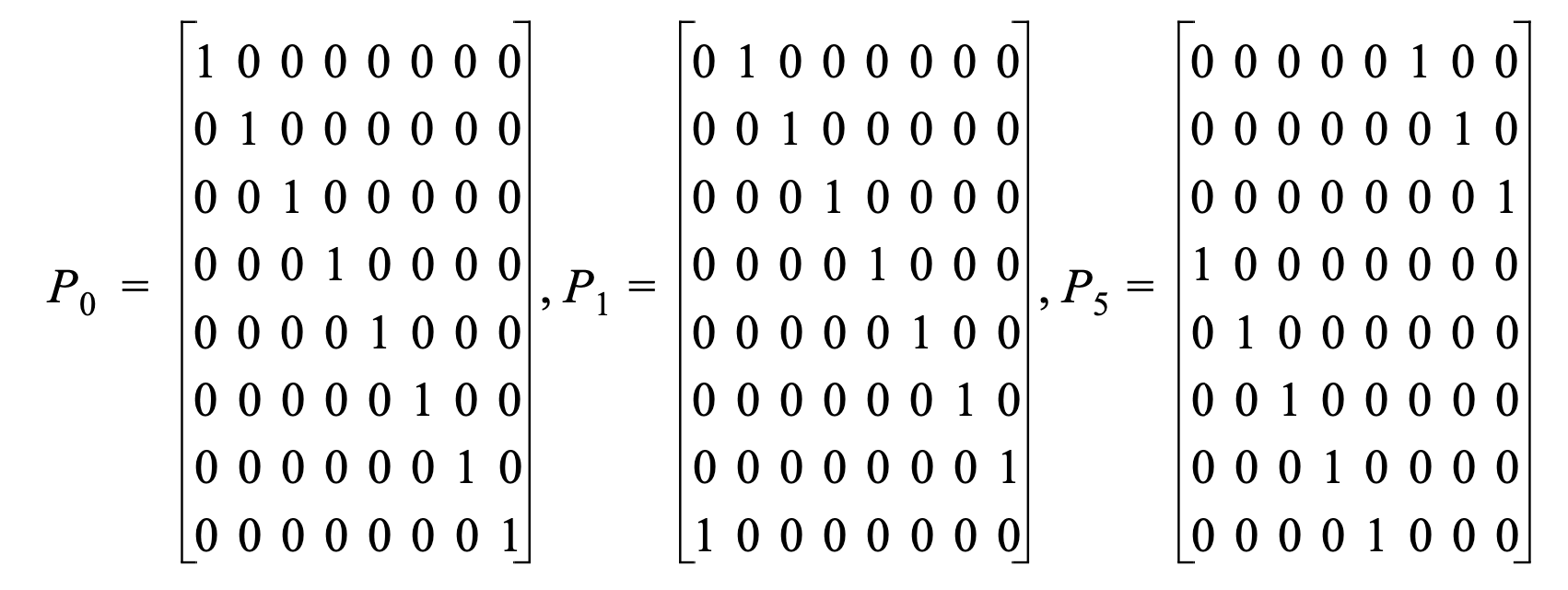The standard introduced codes with three possible block lengths ($n$) of 648, 1296, or 1944 bits long. Additionally, for each block length, four rates are supported: 1/2, 2/3, 3/4, or 5/6.
The codes used in the standard have parity check matrices divided into sub-blocks. Each sub-block is of size $Z\times Z$, where $Z$ depends on $n$. Each sub-block is an all zeros matrix, an identity matrix, or a cyclic permutation matrix $P_i$ obtained from the $Z\times Z$ identity matrix by cyclically shifting the columns to the right $i$ times. Examples of cyclic-permutation matrices with $Z=8$.
 |
|---|
| Taken from IEEE802.11-2020 Standard |
The actual parity check matrices used by the standard appear in the spec in block form. For instance for block length of $n=648$ bits and rate $r=1/2$, the standard uses $Z=27$ and the parity check matrix shown below:
 |
|---|
| Parity check matrix for $n=648$ bits and rate $r=1/2$, taken from IEEE802.11-2020 Standard |
Above, dashes indicate all zero sub-blocks, and numbers indicate the number of shifts per sub-block. Values of $0$ indicate identity matrices. The observed format of double diagonal on the far right is shared among all codes in the standard and enables efficient encoding.